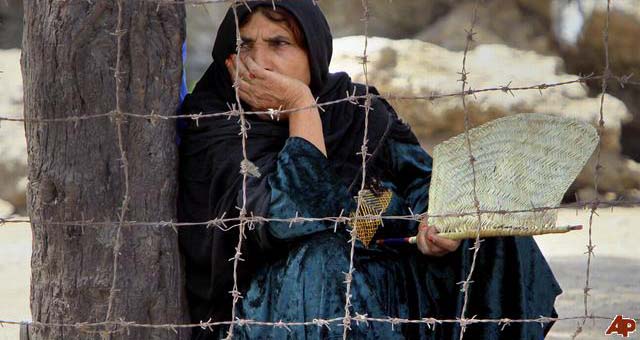NATO’s Civil Military Fusion Center has released a report about origins and current situation of displacements in and from Afghanistan, including internal displacements. The flow is feared to increase with possible security issues and economic crisis after the 2014 withdrawal of international troops. Below are experts from the report.
According to a joint report by the United Nations Assistance Mission in Afghanistan and the United Nations Office of the High Commissioner for Human Rights, there are approximately 425,900 IDPs in Afghanistan, including 64 per cent children (0-18 years), of whom 90 per cent originate from rural communities. UNHCR says that causes of internal displacement vary across regions; however, the most common causes are: armed conflict, general insecurity, threats/intimidation, military operations, internal tribal conflict, cross border shelling, extortion, forced recruitment, illegal-taxation and land disputes. Humanitarian organisations lack access to 95 per cent of IDPS in southeast Afghanistan, 80 per cent of IDPs in northern Afghanistan and 55 per cent in north-eastern Afghanistan.
Displacement Figures
Displacement of refugees and IDPs from and to Afghanistan during the last decade.
- There are 1.9 million registered Afghan refugees and 1 million undocumented Afghans in Pakistan. In Iran, the number of registered refugees is around 1.4 million and the undocumented are at 1 million, according to the United Nations Office for the Coordination of Humanitarian Affairs.
- Approximately forty per cent of Afghan refugees in Pakistan live in refugee villages/camps and sixty per cent in rural and urban areas. In Iran, only three per cent of Afghans live in rural areas, according to UNHCR.
- Ethnically, the majority of Afghan refugees in Pakistan are Pashtun (85 per cent), whereas those seeking refuge in Iran are Hazaras and Tajiks (70 per cent), adds UNHCR.
- The largest demographic group of Afghan refugees in Pakistan includes children up to nine years old, an indication of the high growth rate among the Afghan refugees, according to a joint report by UNCHR and the World Bank. In Iran, fifty per cent of the registered refugees are younger than eighteen years. Each year, the Afghan population in Pakistan increases at a higher rate than the number of individuals repatriated to Afghanistan from its neighboring country.
- Since 2002, more than 5.7 million Afghan refugees have returned to Afghanistan, 4.3 million of them with the assistance of UNHCR . The major flow of refugees occurred during the period 2002-2008, but overall figures for returnees during the last years have declined due to worsening economic and security prospects and difficulties with reintegration. Kabul and the eastern provinces have been the destinations for 20 per cent of returnees (Figure 2).
- In terms of ethnic groups, 56 per cent of the returnees were Pashtuns, 25 per cent Tajiks, 8 per cent Hazaras and 11 per cent other ethnicities, according to UNHCR.
Characteristics of Displacement and Population Movement in Afghanistan
“Pakistan is not a signatory to the 1951 Geneva Convention Relating to the Status of Refugees and does not have any other national refugee legal framework in place. The Tripartite Agreement between UNHCR and the governments of Afghanistan and Pakistan protects Afghan refugees in Pakistan. The recent 31 December 2012 expiration deadline of the Proof of Registration cards was extended until 31 June 2013, reports The Pakistan Tribune. The Afghan government and UNHCR expressed the need to extend the Tripartite for three more years, a decision which is on hold awaiting deliberations and inter ministerial consultations within the Pakistani government. However, further extensions of the Tripartite Agreement are unlikely as public statements by Pakistani officials and pressures from Pakistani police over Afghan refugees have significantly increased during the last two years, writes IRIN. Iran is signatory to the Geneva Convention on refugees; however the country continues to deport undocumented Afghan migrants on the grounds that they are economic migrants. Meanwhile, Iran provides assurances to UNHCR that they will commit to asylum spaces.
“In light of the complex situation affecting the region as a whole and the uncertainty and volatility of the forthcoming transition process, the governments of Afghanistan, Iran and Pakistan, with the support of UNHCR, initiated a quadripartite consultative process in 2011. The backbone of the consultative process is the implementation of the Solutions Strategy for Afghan Refugees (SSAR) to support voluntary repatriation, sustainable reintegration and assistance to host countries. The multilateral SSAR framework seeks to sustain an international focus on humanitarian issues during the upcoming transition in Afghanistan. The experience of the quadripartite consultative process has led the three governments to agree to establish a Quadripartite Steering Committee that will guide the overall implementation of the SSAR. This Committee will also coordinate follow-up, mobilise resources, and manage the new multi-donor trust fund. The Steering Committee will meet periodically to review and discuss implementation of the Strategy at the sub-regional level, and seek participation as needed from relevant stakeholders, donors, and development and bilateral actors. The committee has not met since meeting in Abu Dhabi on 31 January 2013. It is important to highlight that the SSAR may not have a preventive or mitigating mechanism in place in case of a reverse scenario, e.g. a large scale influx of Afghan refugees migrating to Iran and Pakistan in post-2014 due to the deterioration of the economic, political and security environments in Afghanistan.”

